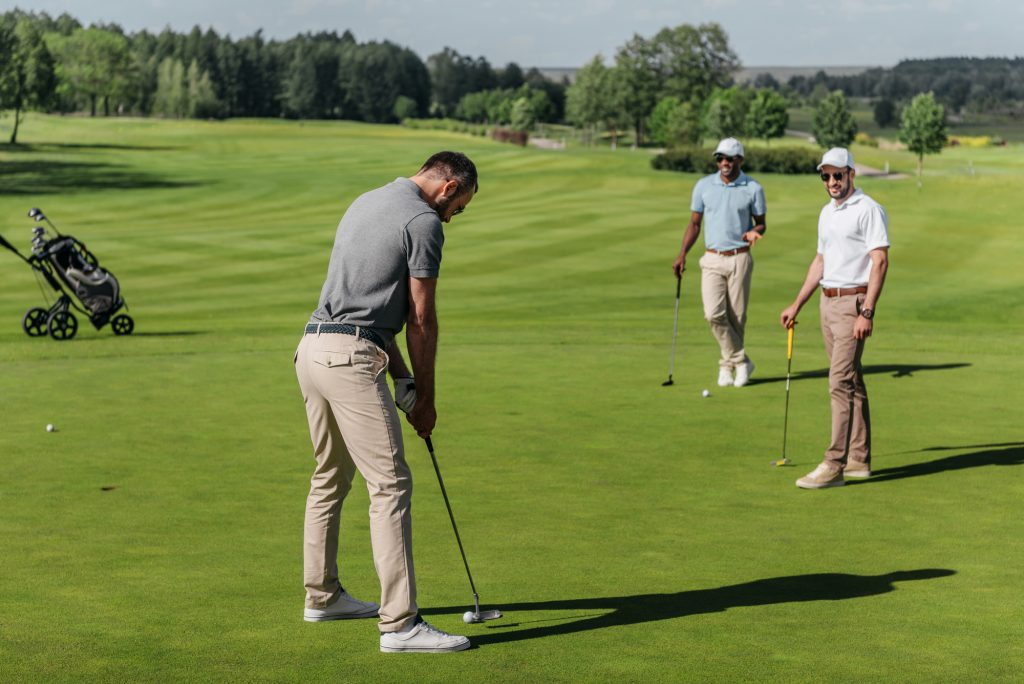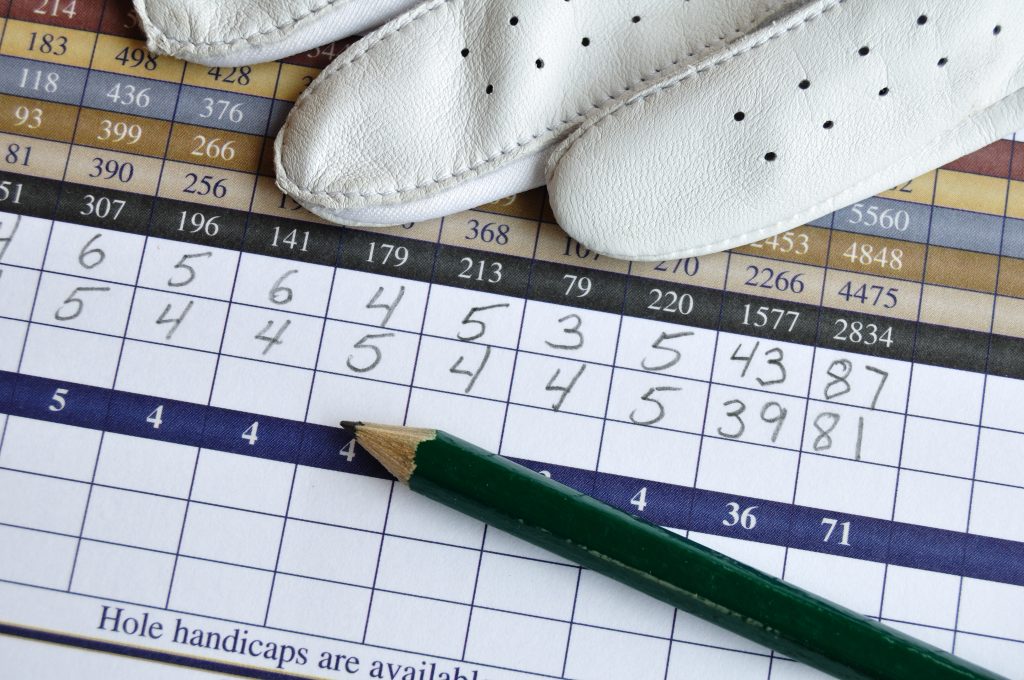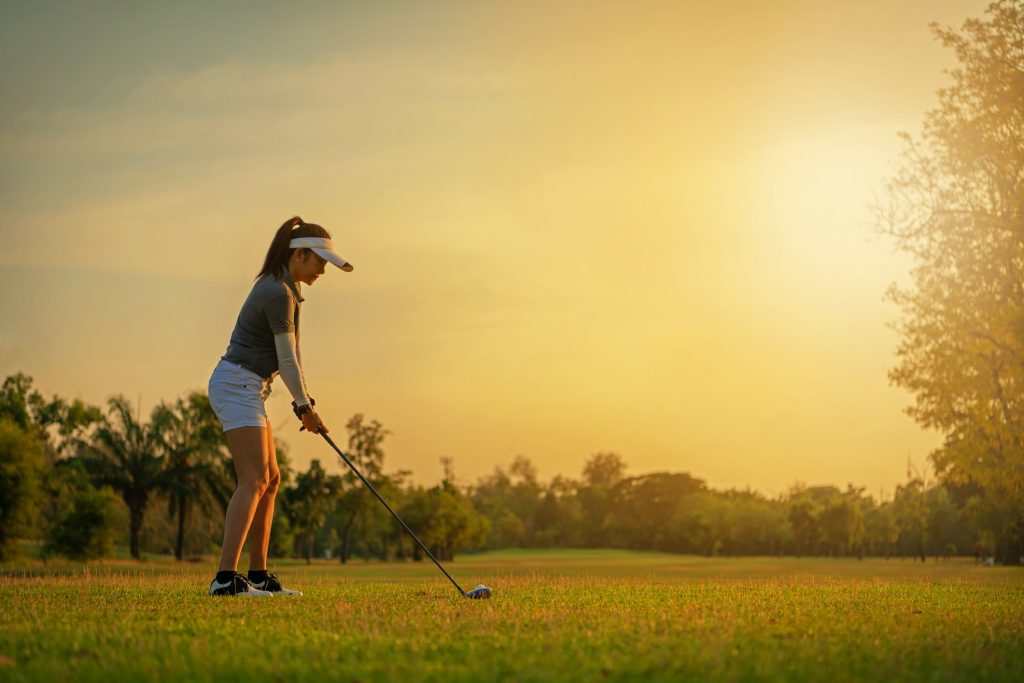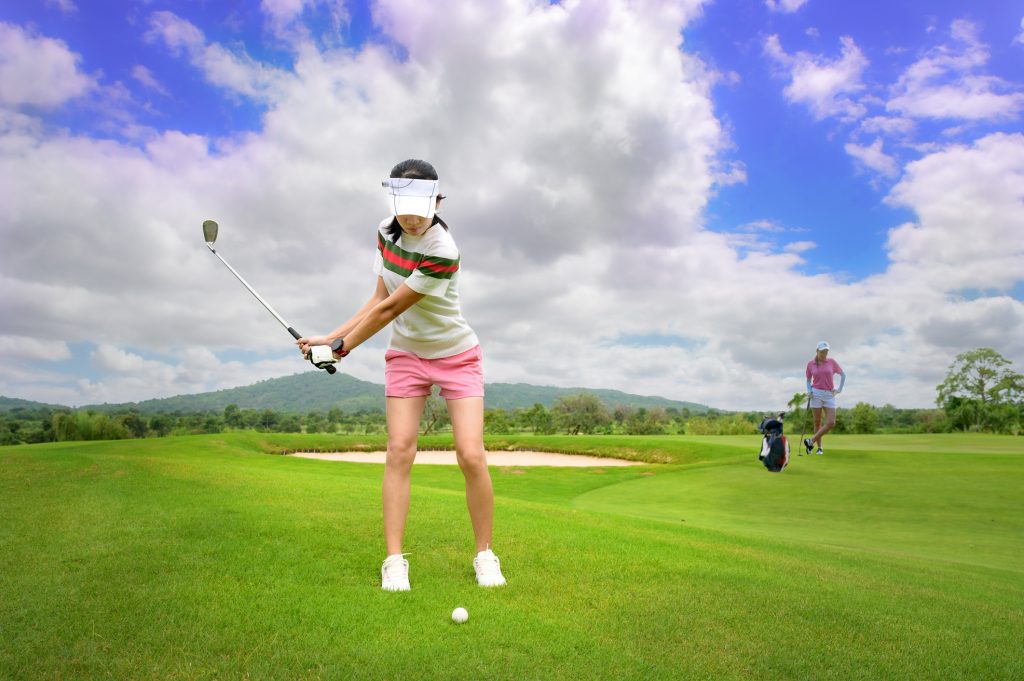This is a post for beginners to learn how to play golf or a refresher for experienced golfers . Golf can be such a relaxing hobby for a lot people, and others will find that this is a competitive sport. This blog outlines the basics for learning how to play golf.
This could also be a refresher for those of you who already know how to play golf.
Learning how to play golf starts with knowing some of the basic rules of golf, an understanding of how to swing a golf club, getting the right equipment, and some basic golf etiquette.
The Basic Rules
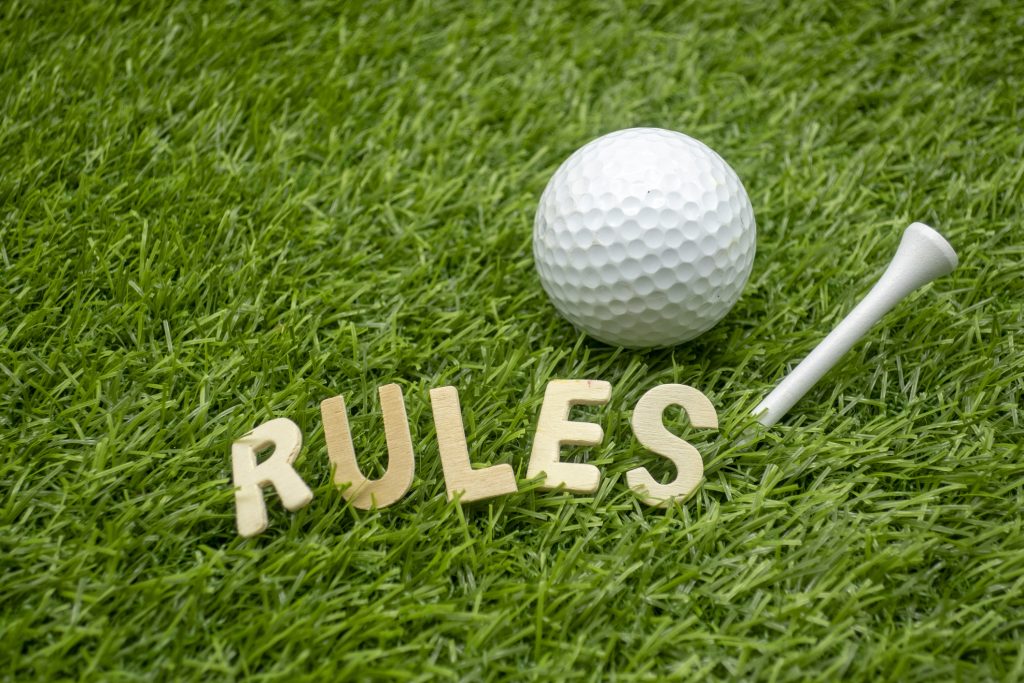
The Object of the Game
The objective of golf is to get you ball in the hole, starting from the tee to the green.
The hole is typically marked by a flag. You want to get your ball “in the hole” in as few as strokes (swings) as possible.
- A typical golf course is made up of 18 holes. There are golf courses with fewer holes, such as 9-hole courses.
- Many beginners start playing on 9-hole courses to learn the game.
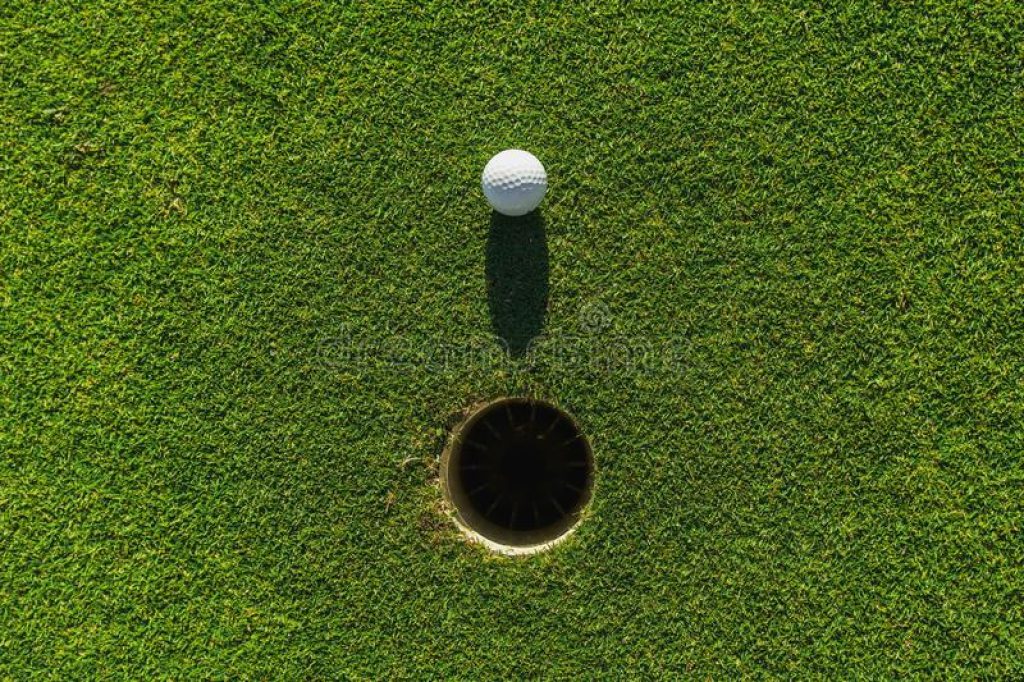
Play Holes 1-18 in Order
Each golf course can be very different to play. Each hole, no matter the number of holes, has a “tee box” which is where you start on the hole, and a green (where the actual hole is located).
Most courses provide golfers with a map of the course so you can see information about the layout of the golf course.
- You can find a course map and scoring card in the clubhouse where you pay for your round, rent clubs and cart.
- When first learning how to play golf you can also get lessons from the clubhouse at almost all golf courses.
- Each hole has a Par score listed. For example, a par 5 means you can take five strokes to get the ball in the hole to “make par” on that hole. Par 4 means you can take four strokes to make par. And finally, for Par 3’s you can take three strokes to make a par score.
Take Turns
When hitting the golf ball, everyone takes turns hitting their shots. Usually, the person with the best score on the previous hole tees off first, with the next best score on the previous hole goes next, and so on.
- The person who is farthest away from the hole hits first after hitting their tee shot, then the person who is next farthest away, and so on until everyone gets the ball to the hole.
Don’t Touch or Move Your Ball
When you are a beginner, you may hit your ball is some strange places. You’ll learn that it is against the rules to pick up the ball and move it to get a better shot – unless your shot is blocked by a man-made object, like a yardage marker
- As you learn how to play golf and you’re not sure that something near your ball qualifies as an obstruction, ask a more experienced player.
Beginners: Try a Par 3 Course Course
A Par 3 course means that all the holes on the course are Par 3s, so the holes are usually shorter in distance than a standard course 18-hole course, which has a blend of Par 5s, 4s, and 5s holes.
These courses are ideal for beginners because you get to practice on holes that are shorter and are tend to have easier shots to make.
The lowest score (fewest strokes) wins
After every hole is completed, the person with the lowest overall number of strokes (score) is the winner.
Keep track of how many shots you take on each hole to total up your score for that hole. Golfers also make sure to track their number of shots relative to par on each hole.
If you are shoot at or under par on every hole, you’re doing great!
When you first learn how to play golf, you may shoot several shots over par, especially on more difficult, holes that are longer, like par 5s. This is very normal – try not to get discouraged.
A key element to getting better at golf is learning how to practice at a golf range near you.
‘Par for the course’ is the total number of strokes to make par from all the holes on the course.
‘Par’ on most 18-hole golf courses is typically a score of 72, but occasionally you might see a par 71.
Keep Score
Each hole on a golf course has a required number of strokes it should take to get a score of par. Each time you swing at the ball and hit it, it counts as “a stroke” toward your score. Practice swings don’t count. Par scores on holes always range from 3-5.
- 2 under par on a hole, is called an “Eagle.”
- 1 under par is a “Birdie”
- Shooting even with the par on a hole is called “Par.”
- 1 over par is a “Bogey.”
- 2 over par is a “Double Bogey”
- 3 over par is a “Triple Bogey”
There are higher scores than this.
The Golf Swing
Stand with your knees and hips slightly bent
At “set up”, stand with your feet between shoulder and hip-width apart and your weight distributed evenly between the centers of your feet, not too far on your toes or heels.
Then, bend your knees slightly and lean forward at your hips (without arching your back) so the end of your club is reaching the ground where you’ll be hitting the ball.
- Your stance should be athletic and balanced. If I were to press on your chest or back I would not push you over.
- The non-dominant arm should be facing toward the target, or the hole. For example, if you are right-handed, your left shoulder would be facing the target line and vice-versa.
Bring your club back and parallel to the ground first
When lifting the club to start your backswing the following should start to move first – clubhead, then hands, next arms, after that shoulders, and finally hips.
Your dominant arm should stay close to your side. Once your pass your back leg, your weight should start shifting to that back leg.
- When the club shaft is parallel to the ground (as seen below), the toe (or rounded edge of your club) should be facing toward the sky.
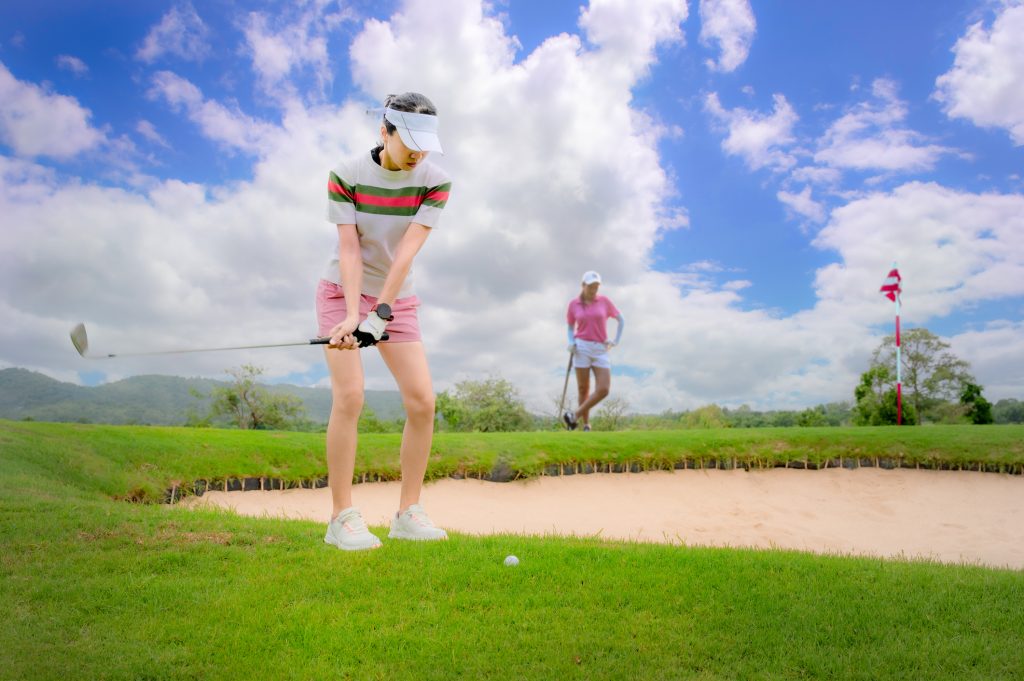
Bring the club up to parallel to the ground
Continue moving your weight to your back leg, and fold your elbows to hinge the club straight up, 90 degrees from your arms, about parallel to the ground.
You should feel your shoulders in an upward rotation, and more weight on your back hip.
- At this point, the toe of your club should be facing back toward the ground.
Rotate your shoulders to bring the club all the way up
While keeping your front arm straight, twist your shoulders, then waste so that your forward shoulder is directly below your chin.
You should feel your front side stretch back.
This will move your club up and over your head with the club’s weight in your hands and arms and the clubhead pointing down toward the ground.
- Imagine your hands being at a 1 o’clock position on a clock – that’s how high they should be from the ground. Some golfers imagine their hands over the top of their back hip.
- Your back hip and ankle, as well as your shoulders and torso, should feel ready to unwind downward toward the ball.
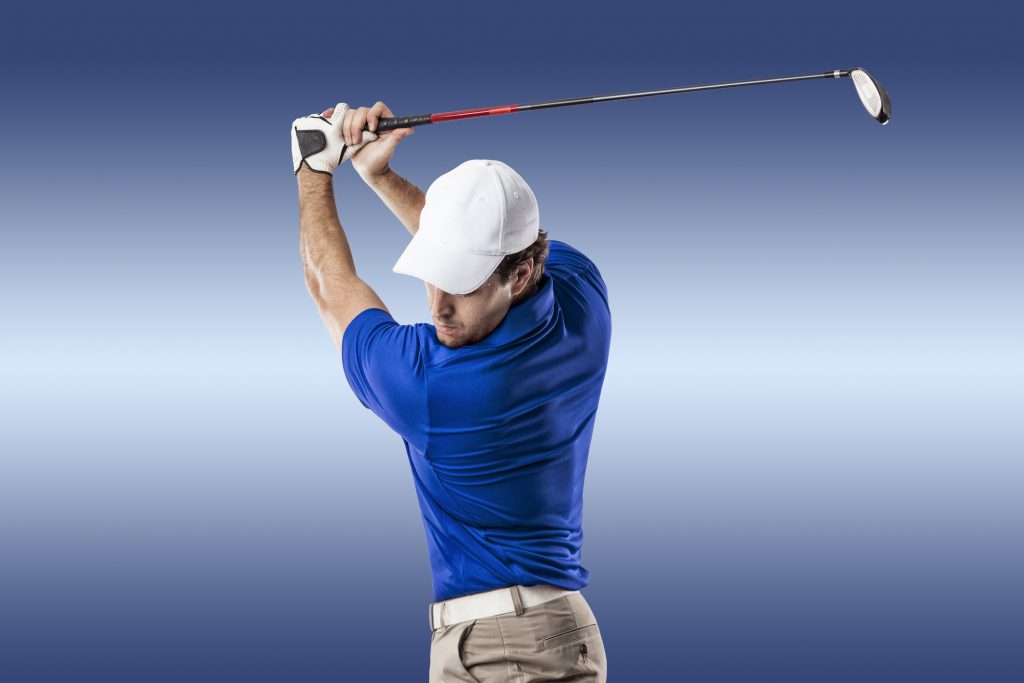
Hitting the Ball in the Downswing
Uncoil and shift your weight forward
As you uncoil and bring the club down, your weight should slightly shift toward the direction you’re swinging. Your back elbow should pass in front of your back hip, but you should keep your body centered with your belt buckle pointed toward the ball. Head still down, eyes still looking at the ball.
- Keep your wrists hinged like they were as you start to bring the club down, to avoid throwing the club’s weight from the top. This is called “casting.” Not good for your swing.
- Your hips should follow
- The triangle that your hands (together) and your two shoulders make should remain in tact as your club head strikes the ball and follows through
Point your belt buckle to the target
As you make contact with the ball, your hips should continue to rotate so that your body straightens on the side you’re aiming toward. Your head should remain behind the ball as you make contact, and your back wrist should be bent.
- Your weight is now mostly shifted to your leading leg (the side the target is on)
- Your belt buckle should finish pointed straight toward the target
- As you learn how to play golf, you’ll know that your front side hip should finish open or even back
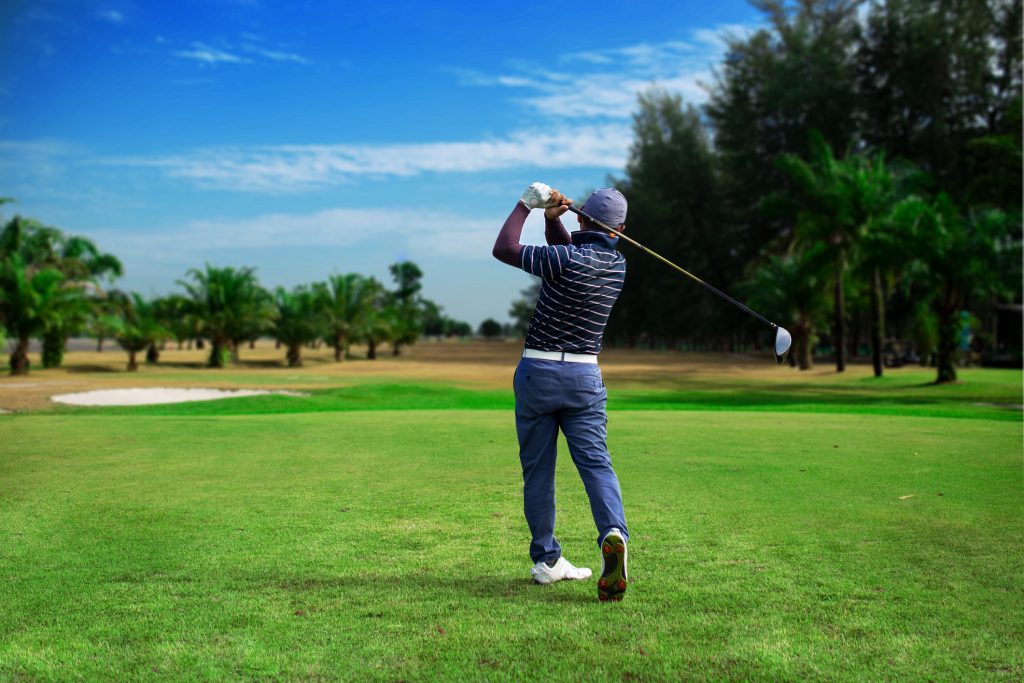
Extend both your arms fully for the follow-through
Don’t stop your swing after you make contact with the ball.
Make sure to bring your arms and the club shaft up and forward so that they’re almost parallel to the ground toward your target.
This is because you will be twisting your hips in the swing, your arms should move almost inside and back toward your body.
- The knee on your back leg should kick inward toward the straight knee during the part where you are shifting your weight.
- The follow-through of your swing should leave the clubhead below the level of your hands, assuming you have maintained control in your arms and wrists through your swing.
Get the Right Golf Equipment
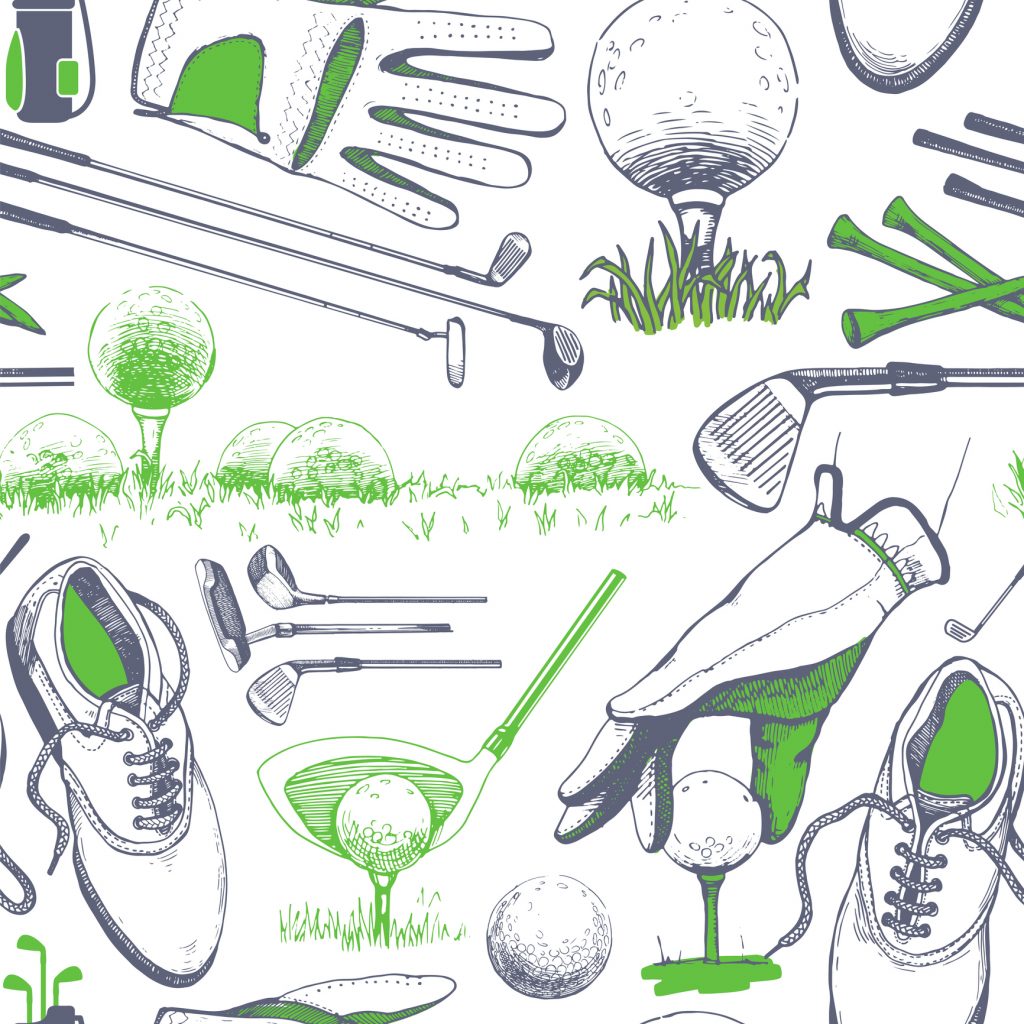
Golf Clubs
You are officially allowed to carry up to 14 clubs in your golf bag. The most important clubs include a driver, a hybrid, irons (4-iron thorugh 9-iron), a pitching wedge, sand wedge, and putter. You can rent clubs on the golf course, or find racks of discounted and used clubs at many sporting goods stores.
- If you’ve never played golf before, consider going with someone who will let you use their clubs, renting clubs at the golf course, or going to a driving range to try out different clubs before spending money on your own set.
- Guide to choosing the right golf clubs
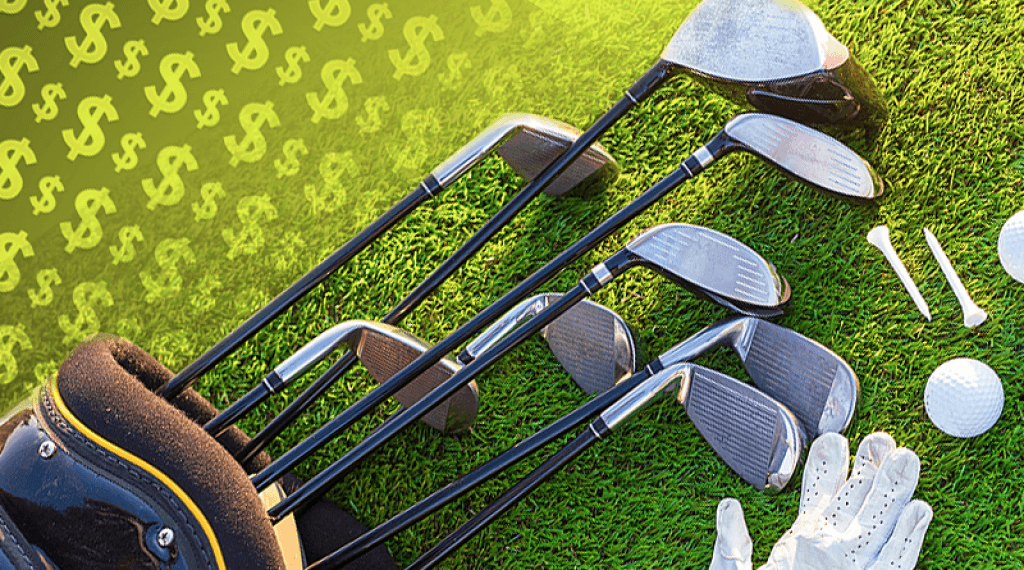
Golf tees and golf balls
Tees are pretty straightforward; they look like a brightly colored wooden or plastic nail that you set your ball on before hitting it. For balls, there is a range of quality and prices to choose from. If you’ve never played before, buy cheap balls that cost around $20 per dozen.
- You will lose balls when you’re first starting out, so it’s best not to spend too much on them right away.
- Some golf courses provide balls for you to play with; find out ahead of time if a golf course does this by calling the course office.
- Golf balls and tees can be purchased at sporting goods stores.
Invest in golf gloves and get a golf bag
Golf gloves are important because you can start getting blisters on your hands from just a few strokes. They also help you keep a firm grip on your club even if you’re sweating. Go to a sporting goods store to try on gloves and find ones that fit you.
- For a golf bag, any sturdy bag that carries your clubs, balls, rain gear, water and/or snacks will work. Check out thrift stores, yard sales, or used gear websites online to find a good deal on a golf bag.
Playing Golf With Proper Golf Etiquette
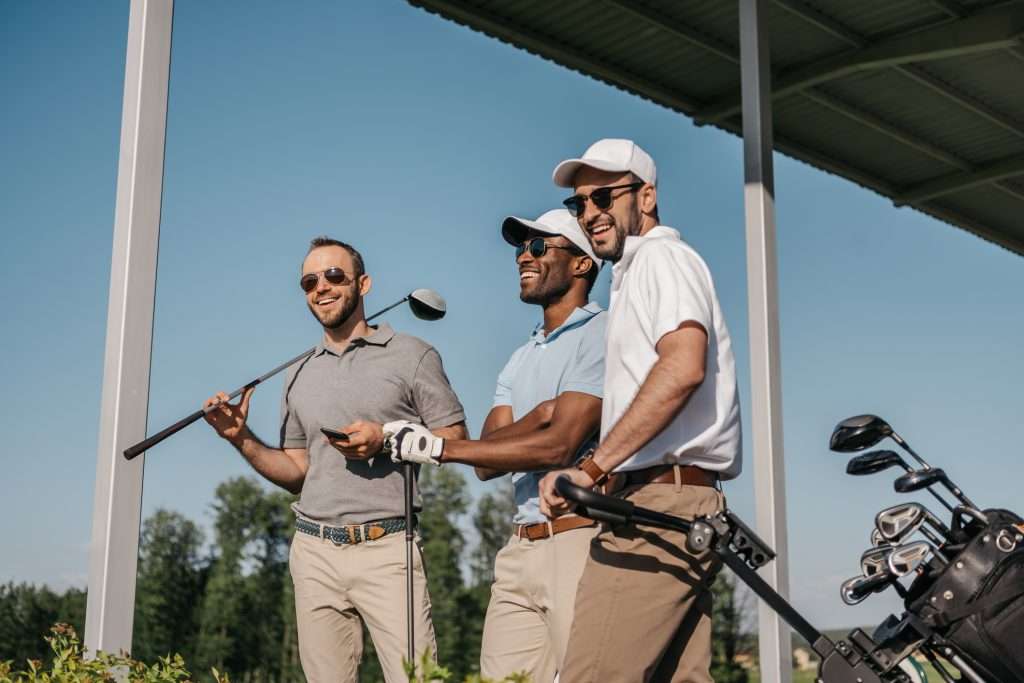
Keep up the pace of play
One element that is quickly discovered when you learn how to play golf is “pace of play.”
While you don’t need to rush while you are hitting your shots or run, it is important to be ready to hit when it is your turn.
Learn how to determine when it’s your turn and get in position to hit the ball soon after the player that goes before you. Here are a few tips to keep up the pace of play.
- Quickly determine who should hit the ball next
- Limit the number of practice swings before your shot
- Place your bag or cart in a location you have to walk to next, not in a place you need to go back
Remember, golf is a game, but is also a social activity so quiety talking with others in your group on the course while playing is expected while you are walking along, but not when someone is about to swing their club. Too much talking during a shot can distract the person and throw them off – bad form.
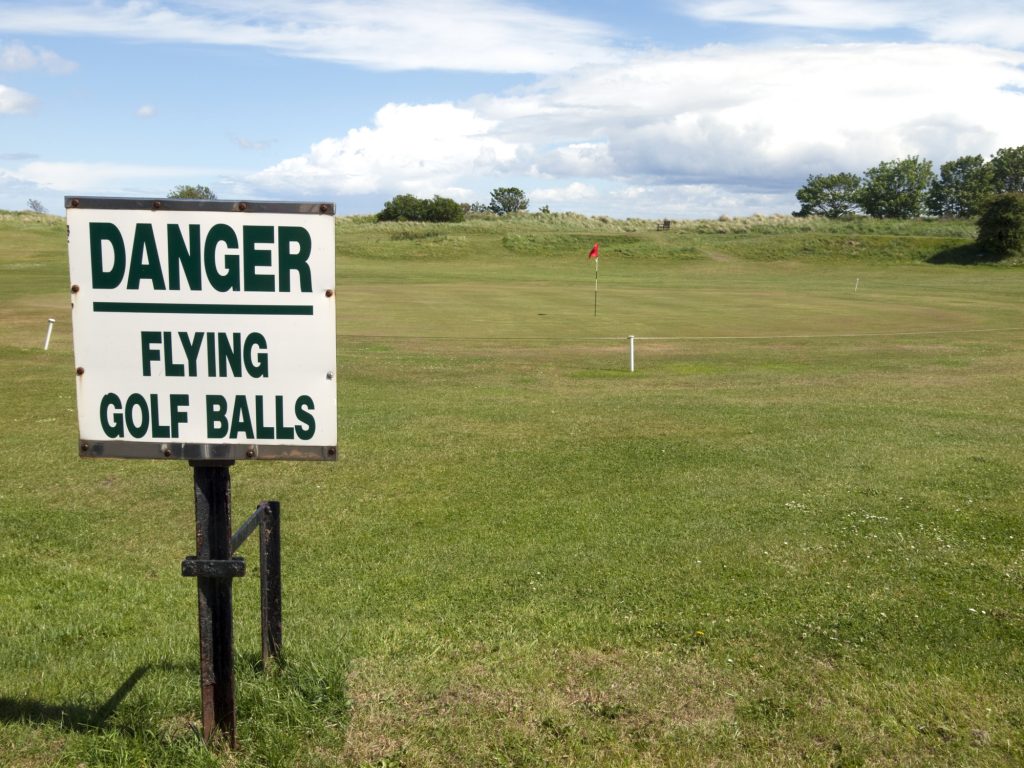
Yell “Fore!” if there’s a chance your ball will hit someone
This is very important when you’re starting out, because your shots may not go as expected. Don’t wait to yell; the moment you see your ball heading toward a person, yell “Fore!” as loud as you can so they look up and get out of the way of the ball.[19]
Stay out of the way of others’ shots
When someone is about to take a shot, stand off to the side several yards away and a bit behind them so as not to distract them. Don’t stand or walk between a person taking a shot and their target.
- Stay alert of other players not in your group who are using the course. Occasionally balls from other players will travel onto your hole; don’t touch the ball and allow the person to come get the ball themselves.A flying golf ball can seriously injure a person if it hits them. This step is important for safety as well as being common courtesy.
You are only allowed 3 minutes to look for a lost ball
If you can’t find your ball after a shot, you can only spend up to 3 minutes searching for it. After that, you need to take a 1-stroke penalty and hit another shot.
To make this second shot (after losing a ball), stand as close to where you were on the previous shot and “drop” the ball by holding it out at the height of your knee and dropping it to the ground. This is called a drop.
- If you lose your ball from tee-off, just take the penalty stroke and return to your tee to make the shot again.
Here is a Golf FAQ for you to read through if you feel like you need more information.

